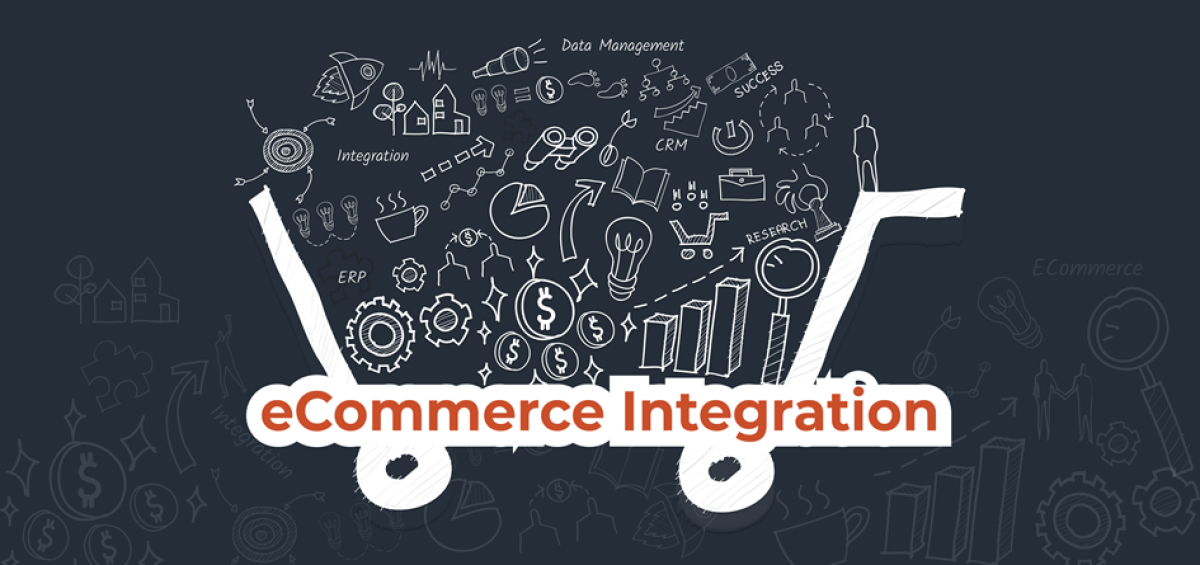Let’s face it—running an ecommerce business in 2025 is no small feat. With customers expecting fast delivery, real-time updates, and personalized shopping experiences, simply launching an online store isn’t enough anymore. To thrive, businesses need smarter systems that talk to each other. That’s where ecommerce platform integration comes in. You might be wondering: what does that even mean, and why does it matter? In simple terms, ecommerce integration connects all the tools, apps, and services you use—like your website, fulfillment partners, marketing tools, and inventory systems—so they work together seamlessly.
Whether you’re a solo entrepreneur running a Shopify store or a brand scaling across multiple Printful ecommerce platforms, the right integrations can transform the way you operate. This guide will explore what integration looks like today, highlight real-world ecommerce integration examples, review top tools (including Printful integrations), and give you actionable tips to get started. We’ll also answer common questions people have about e commerce integration, from setup to strategy.
The goal? Help you streamline operations, reduce costs, and deliver the kind of experience your customers will remember.
What is Ecommerce Platform Integration?
Ecommerce platform integration is the process of connecting your online store with other tools or systems—like inventory management, payment gateways, shipping services, marketing platforms, and accounting software. Instead of manually transferring information between systems, integration automates the data flow, keeping everything updated and in sync.
In 2025, integration isn’t just a tech buzzword—it’s a must-have for any ecommerce business that wants to operate efficiently and scale.
Why Integration Matters More Than Ever
The modern ecommerce landscape is crowded and competitive. If your systems don’t communicate, you’re left managing tasks manually—leading to errors, delays, and burnout.
Here’s what e commerce integration brings to the table:
- Time savings through automation
- Reduced errors in orders and inventory
- Real-time data updates
- Better customer experience with fast, accurate service
- Easier scaling as your business grows
It’s not just about technology—it’s about creating a more human experience for both you and your customers.
Ecommerce Platform Integration Examples
To see integration in action, here are some real-world ecommerce platform integration examples:
1. Shopify + Printful Integrations
Products created in Printful sync automatically with Shopify. When a customer orders, Printful handles printing and shipping, and the customer gets updates in real time.
2. Shopify + ShipStation
Need to manage multiple shipping carriers and track orders efficiently? Integrating Shopify with ShipStation automates label creation, shipping rules, and order syncing—great for high-volume sellers.
3. Shopify + QuickBooks
Accounting is essential but tedious. Integrate QuickBooks with Shopify to automatically log income, taxes, and expenses—no more late-night bookkeeping.
4. Shopify + Klaviyo
With this integration, you can automate follow-ups, abandoned cart emails, and more—boosting conversions with less effort.
Choosing the Right Ecommerce Integration Services
There are three main paths to integrating your ecommerce platform:
1. Built-In (Native) Integrations
Built-in (native) integrations are pre-configured connections between your ecommerce platform and other services, designed to work seamlessly right out of the box. These are often the easiest and fastest way to set up ecommerce platform integration, especially for small to mid-sized businesses using popular tools. For instance, Shopify offers direct integrations with apps like Printful, so when you connect them, products, orders, and tracking details sync automatically—no coding or complex setup required. Native integrations typically come with user-friendly interfaces and official support from the platforms involved, making them ideal for store owners who want reliability and ease of use. They cover a wide range of essential functions like payment processing, shipping, marketing, and inventory management. While they may not offer the same level of customization as third-party or custom-built solutions, native integrations are a smart starting point for creating a connected, streamlined ecommerce system.
2. Third-Party Tools
Third-party tools are powerful connectors that help bridge the gap between different ecommerce systems without the need for custom coding. Platforms like Zapier, Make (formerly Integromat), and Automate.io allow store owners to automate tasks by linking apps and services that don’t natively integrate. These tools work through pre-built workflows, often called “Zaps” or “Scenarios,” which trigger actions—like sending an order to a fulfillment service or updating inventory across platforms. This is especially useful for businesses working with multiple Printful ecommerce platforms or trying to coordinate between sales channels and back-end systems. While third-party tools may have some limitations in customization compared to full-scale custom integrations, they offer an affordable, user-friendly way to automate your ecommerce operations quickly and effectively.
3. Custom Integrations
Custom integrations are tailored solutions designed specifically for businesses with unique workflows, complex systems, or advanced scalability needs. Unlike plug-and-play tools or third-party connectors, custom integrations are built using APIs and often require developer support to connect your ecommerce platform—like Shopify—with tools that don’t offer native compatibility. For example, if you’re using a custom ERP system or a specialized fulfillment partner outside the usual Printful integrations, a custom integration ensures data flows seamlessly between systems without manual intervention. These integrations offer maximum flexibility and control, allowing you to automate business logic, manage multi-channel operations, or create specialized features that off-the-shelf solutions can’t support. While they require more time and investment upfront, custom integrations are ideal for growing or enterprise-level ecommerce brands looking to build a scalable, long-term infrastructure.
Steps to Start Integrating Your Ecommerce Tools
- Audit your tools. Make a list of platforms you’re currently using—storefronts, CRMs, fulfillment, etc.
- Identify pain points. What’s slowing you down or creating errors?
- Choose platforms with open APIs. This makes integration easier.
- Use native integrations where possible. Start simple before going custom.
- Test before scaling. Always run a pilot to iron out issues.
Looking Ahead: Ecommerce Integration Trends in 2025
As we move forward, ecommerce integration is becoming even smarter. Expect to see:
- Headless commerce, where front-end and back-end are decoupled for flexibility
- Omnichannel syncing, from TikTok Shop to Amazon, all managed in one place
- More robust Printful ecommerce platforms, expanding product range and global fulfillment
Businesses that integrate early and often will be the ones that thrive.
FAQs
What is eCommerce platform integration?
It’s the process of connecting your online store to other software systems—like shipping, inventory, accounting, or marketing—so they communicate automatically and share real-time data, reducing manual work and improving efficiency.
How to integrate eCommerce into your website?
Choose a platform like Shopify or WooCommerce, then connect it with services like Printful or payment gateways using built-in integrations or third-party tools. Most platforms offer step-by-step guides or apps to walk you through the process.
What is integration in commerce?
In commerce, integration means linking different systems (e.g., inventory, sales, logistics) so they work together as a cohesive whole. It’s essential for optimizing processes and offering a flawless experience to both employees and clients.
What does “fully integrated e-commerce” mean?
Fully integrated ecommerce means all systems—storefront, inventory, shipping, customer service, and marketing—are connected, allowing automatic data sharing and real-time updates across your entire business.
What are the 3 types of e-commerce?
The three main types are B2C (business to consumer), B2B (business to business), and C2C (consumer to consumer), each with its own platforms, strategies, and integration needs.
To sum up, ecommerce platform integration is no longer optional—it’s essential. E-commerce success in 2025 requires lean, intelligent, and linked operations. Whether you’re syncing your Shopify store with Printful integrations, automating your accounting, or running targeted email campaigns, integration helps you work less and achieve more. Start small, think big, and invest in the right ecommerce integration services as your needs grow. The result? A business that runs smoothly behind the scenes—and delights customers every step of the way.






